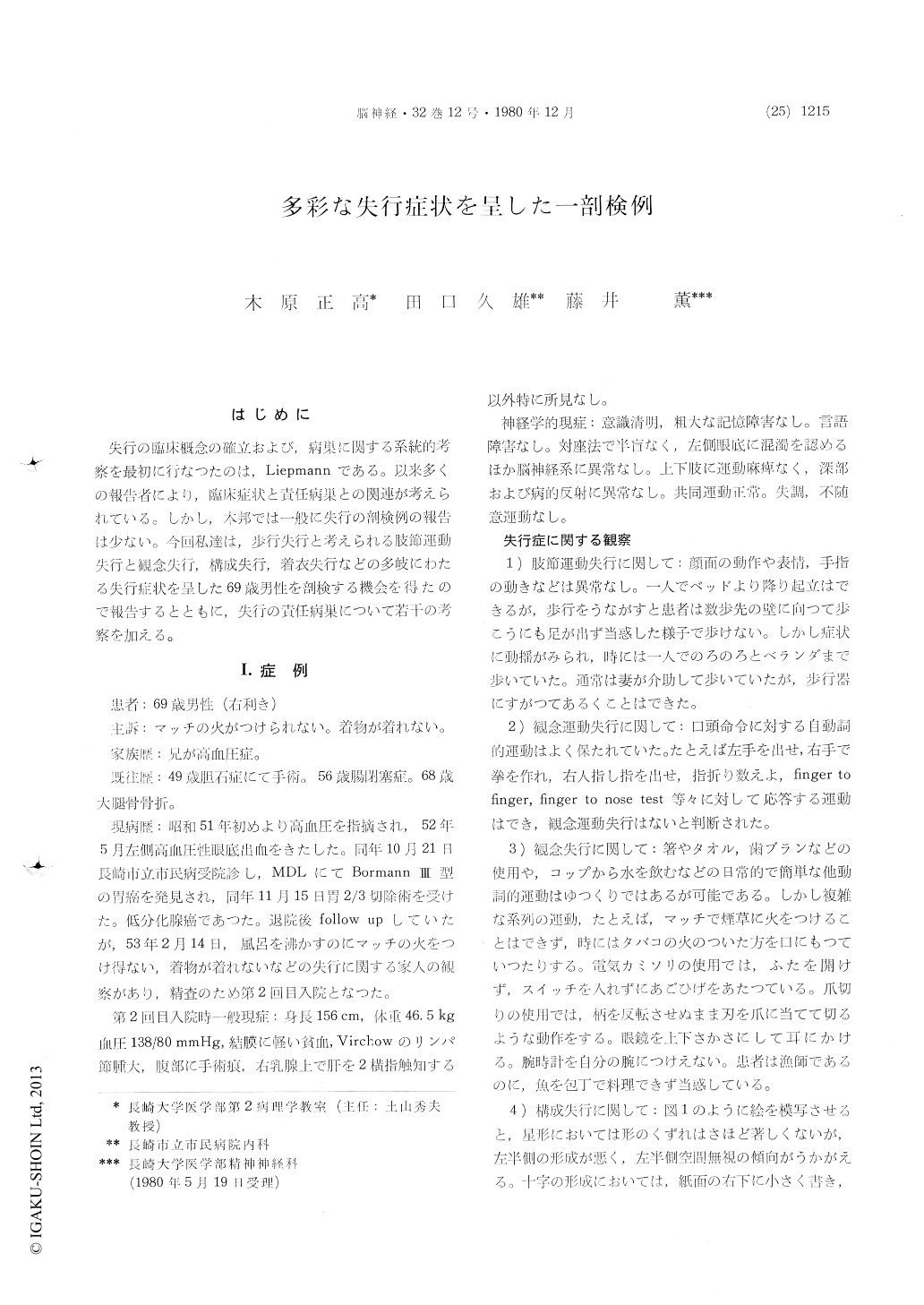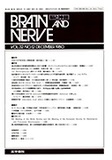Japanese
English
- 有料閲覧
- Abstract 文献概要
- 1ページ目 Look Inside
はじめに
失行の臨床概念の確立および,病巣に関する系統的考察を最初に行なつたのは,Liepmannである。以来多くの報告者により,臨床症状と責任病巣との関連が考えられている。しかし,本邦では一般に失行の剖検例の報告は少ない。今回私達は,歩行失行と考えられる肢節運動失行と観念失行,構成失行,着衣失行などの多岐にわたる失行症状を呈した69歳男性を剖検する機会を得たので報告するとともに,失行の責任病巣について若干の考察を加える。
A 69 years old right-handed man was autopsied for examination of pathological foci of gait apraxia, ideational apraxia, constractional apraxia and apraxia for dressing.
His chief complaint was"I can not light match and I am awkward in dressing".
By further examination, we found other sympto-mes that he could not use the electric shaver and the nail clipper, that he hesitated for gait starting and that he was awkward in writing figures of the star and the cross decoration.
By the autopsy findings, we found multiple anemic infarctions and hemorrhagic infarction in cerebrum and cerebellum. These infarctions were found in the left superior frontal gyrus-left pre-central gyrus (area of body- lower extremities), both sides postcentral gyri-both anterior areas of lobulus parietalis superior and the right supra-marginal gyrus (1×2.5×1cm in left side lesion) and right parietal-occipital lobe (1.5×1.5×3.5cm). As a result of this autopsy findings, we came to the conclusion that the pathological foci of those apraxias previously described were each infarctions later described.
We point out a few interesting facts in this case.
First, the ideational apraxia was isolated from ideo-kinetic apraxia and the pathological foci of the ideational apraxia in both postcentral gyri-both anterior areas of lobulus parietalis superior and right supra-marginal gyrus were small and narrow contrary to what is generally spoken that the focus of ideational apraxia was large and massive.
Second, the constructional apraxia was not severe in contrast to both side infarctions of parietal lobes, therefore the true pathological focus of construc-tional apraxia was thought to be more posterior area than this case.
Third, the pathological focus of apraxia for dress-ing was suggested to be right parietal-occipital lobe that was generally accepted.
Fourth, it was suggested that the pathological focus of gait apraxia was the multiple small in-farctions of the left frontal superior gyrus-he left precentral gyrus and the pathologic changes were mild so that this patient did not fall in cartical kinetic paralysis.

Copyright © 1980, Igaku-Shoin Ltd. All rights reserved.


